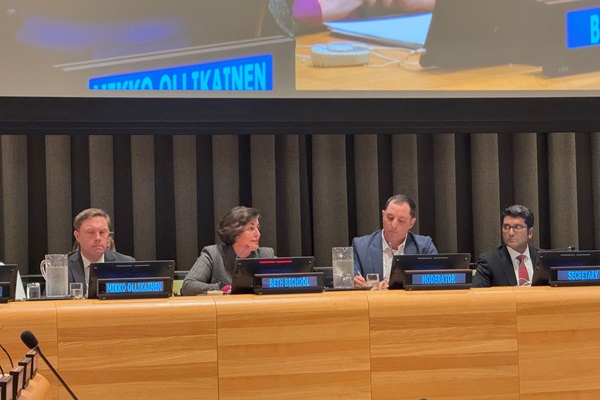
New York – In the face of intensifying El Niño and La Niña weather events, effective anticipatory action is crucial to shield and better equip communities ahead of shocks as it helps to save lives and protect livelihoods by preventing damage and losses to crops, livestock, productive lands, water and infrastructure, said Beth Bechdol, Deputy Director-General of the Food and Agriculture Organization of the United Nations (FAO).
She gave insights into FAO’s experience in dealing with the latest El Niño and its impacts at a high-level thematic event entitled “El Niño 2023-2024: Actions for the safety, sustainability and resilience of people and the planet” organized jointly by the United Nations General Assembly (UNGA) and the United Nations Economic and Social Council (ECOSOC).
The El Niño event in 2015-2016 – one of the strongest on record – affected over 60 million people worldwide, resulting in 23 countries appealing for international humanitarian assistance worth over $5 billion. And, the most recent event in 2023-2024 is one of the five strongest on record, creating overwhelming needs among the most vulnerable.
“Unless we dramatically improve our ability to anticipate, act swiftly, and build long-term climate resilience, we will fail to tackle El Niño and other escalating climate extremes. We know that we can get ahead of disasters, avert and minimize impacts, and ultimately reduce humanitarian needs – but this requires investing in agriculture and farmers,” Bechdol said.
Such actions may range from cash transfers that help fisherfolk store their boats and gear ahead of a storm to backyard gardening kits that help families produce food at home. In pastoral communities, FAO provides animal feed and vaccines to keep essential livestock alive and healthy ahead of drought, while crop farmers may get drip irrigation and drought-resistant seeds.
The Deputy Director-General outlined four key game-changing actions to efficiently tackle extreme weather events:
To this end, she noted that flexible financing mechanisms for anticipatory action such as through the Central Emergency Response Fund (CERF) and FAO Special Fund for Emergency and Rehabilitation Activities (SFERA) have been instrumental to allow for timely interventions.
Bechdol concluded by urging the international community to broaden the focus beyond immediate response efforts to include longer-term solutions to weather extremes while better linking humanitarian, development and peace efforts to deliver the best solutions for the challenges of today and the future.
This one-day dedicated thematic event brought together Member States and Observers, the United Nations, non-governmental organizations, and other relevant stakeholders. The participants discussed the range of actions required to turn enhanced scientific predictability into global, regional, national and local level plans and actions that address the impacts of the 2023-2024 El Niño phenomenon on affected countries.
FAO’s response to El Niño
Using modelling based on previous El Niño-driven weather patterns, FAO acted swiftly to avert the worst of its effects in 2023-2024, launching together with governments and partners anticipatory actions in 23 countries at risk. Examples of action on the ground included: repairing or constructing irrigation systems and animal health interventions to address potential drought-induced disease outbreaks; repairing riverbanks, rehabilitating canals, and providing cash transfers ahead of floods so families can make their own choices about meeting their needs.
In Central America, for example, the timely distribution of drought-tolerant and short-cycle crop seeds has helped each family receiving assistance to produce about 60 kg of vegetables every two months, to mitigate the impact of El Niño-induced drought on local food production. Likewise, in Somalia, repairing around 4,600 metres of riverbank breakage points along the Shabelle river has protected almost 40,000 hectares of cropland from expected floods.
According to FAO assessments, for every $1 invested in anticipatory action, it creates a return for farming families of more than $7 in avoided losses and added benefits.
The timeliness and success of FAO's anticipatory actions during this El Niño event are largely due to the extensive groundwork conducted by FAO over several years to enhance anticipation and preparedness capacities within its country offices and among key partners.